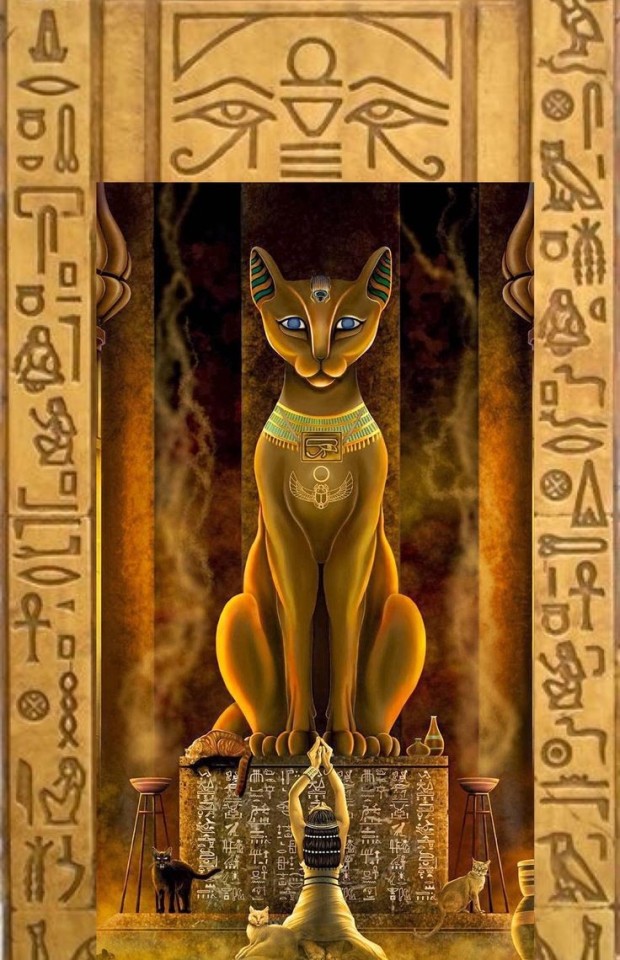#ancient egyptian polytheism
Text
the egyptian gods
MA'AT: the essence of harmony and balance
in the beginning, well, there were a lot of different beginnings,
AMUN/AMUN-RA: god of the sun and air, supreme king of the gods in some periods. some stories say that he created himself and then everything else in the universe
ATUM: sometimes considered another name for Ra, but when separated he represents the evening sun. he was the first of the Ennead to emerge from Nu, and was the supreme ruler of the gods, and creator of the universe and human beings
RA/RE: when separated from Atum, he represents the midday sun, but other stories say that his aspect changes as he advances his sun barge across the sky. also considered the supreme ruler and creator of the universe. later merged with Amun as he rose in popularity
PTAH: another creator of the universe, Ptah was lord of truth, and the patron god of sculptors and craftsmen (since he was considered to have sculpted the earth). he created the first mound of earth from Nu by imagining it in his heart and breathed life into things with his voice
KHNUM: said to have created everything on his potter's wheel. in a different story he created humans on his potter's wheel then raised them up to the sun so that Ra could breathe life into them
NEITH: a war and funerary goddess, she created all things from her innards. she invented birth, therefore considered the "mother goddess" and closely associated with life and living things
MUT: emerged from Nu and gave birth to the world on her own, or in other stories was the wife of Amun. she was a goddess of protection, guarding humans in life, and against demons in death
MEHET-WERET: celestial cow goddess that emerged from Nu and gave birth to Ra at the beginning of time. goddess of water, creation, and rebirth
then under Atum/Ra creation stories, there were the first gods, called the Ennead,
SHU: the primordial god of air, he was born from Atum/Ra with his sister Tefnut to create the world. it's said that after bein gone for so long, Atum/Ra sent the eye of Ra to search for them, and his tears of happiness at having them returned became humans
TEFNUT: the sister and wife of Shu, she was the primordial god of moisture and rainfall
NUT: child of Shu and Tefnut, she represented the sky, but her relationship with her brother Geb disturbed Atum/Ra so he pushed her high above Geb, decreeing that she could not give birth on any day of the year. however, Thoth then gambled with Iah (or Khonsu) winning five days of moonlight he transformed into days. On those five days, her five children were born
GEB: god of the earth and growing things
OSIRIS: child of Nut and Geb, he was lord and god of the underworld and afterlife. he was said to be the first god to die, after being killed by his brother Set, wherein Isis then resurrected him and they bore Horus.
ISIS: child of Nut and Geb, she was the goddess of the moon, healing, fertility, and magic
NEPHTHYS: child of Nut and Geb, she is the twin sister of Isis and wife of Set. she is considered a goddess of funeral rites, darkness (not in an evil sense), and protector of women.
SET/SETH: child of Nut and Geb god of war, chaos, and storms. although he was the first murderer, he was considered a necessary balance to the good of Osiris. he killed Osiris to usurp his throne, only to later be usurped by Horus.
However, sometimes Set was replaced with Horus in the Ennead,
HORUS: technically there were two Horuses, Horus the Elder, who was a child of Nut and Geb, and Horus the younger, who was the better known Horus. however, they ended up merging into one deity, a god of the sun, sky, and kingship
under the Amun (and sometimes Ptah) creation myth(s) there was the group called the Ogdoad, including Amun and
AMUNET: the female counterpart of Amun, together they represented forces unseen, including the wind and air
KEK: the god of the hours before dawn, he guided the sun barge of Ra from the underworld to earth
KAUKET: the female aspect of Kek, she represented the hours after sunset, and guided the sun barge of Ra into the underworld. Together these gods represent darkness (but not in an evil way)
HEH AND HAUHET: often not separated in any meaningful way, these two were the gods of infinity, eternity, and time
NUN AND NAUNET: personification of the primordial waters, from which everything was created. Naunet is only ever referenced when it comes to the Ogdoad
However, when Amun became revered as a god of creation, him and Amunet were sometimes replaced by
NIA AND NIAT: gods of the void
so then the rest of the gods,
THOTH: advisor of Atum/Ra, he was the god of wisdom, writing, and truth, and was associated with the moon. sometimes he is the child of Atum/Ra, other times he is the son of Horus. he gave humanity the gift of language and marked the passage of time
SESHAT: consort of Thoth, she was the goddess of writing, books, and measurements
ANUBIS: son of Nephthys and Osiris, he was the god of the dead and associated with embalming. he leads the souls of the dead to the Hall of Truth and weighs their heart to determine if they were good or evil
KABECHET/QEBEHT: daughter of Anubis and a funerary deity. she provides cool, pure water to the souls awaiting judgement in the Hall of Truth
BASTET: daughter of Ra, although her image has tempered over time, Bastet was often considered a defender of pharaohs and the hearth. goddess of cats, women, and fertility
SEKHMET: sister of Bastet, she was goddess of destruction, justice, and desert winds. after Ra became tired of the sins of humanity, he sent Sekhmet to destroy them. she ravaged the land until the other gods implored Ra to stop her, where he took beer dyed red (to emulate blood) and left it at Dendera. when she drank it, she fell asleep and woke as the benevolent goddess Hathor
MAAHES: solar god and protector of the innocent, sometimes the son of Bastet, sometimes Sekhmet
HATHOR: goddess of joy, celebration, love, women, drunkenness, and sometimes animals. in some stories she is the wife of Horus the elder, in some Horus the younger, and in some Ra
MA'AT: embodiment of the principle of ma'at, she was the goddess of truth, justice, and harmony
KHONSU: the son of Amun and Mut, god of the moon and healing
MONTU: a god of war and the vitality of pharaohs, he was later replaced by Khonsu as a child of Amun and Mut
TENENIT: goddess of beer and brewing, consort of Montu
HEKA: patron god of magic and medicine, but was also said to be present at the creation of the universe
HU: god of the spoken word, personification of the first word Atum/Ra ever spoke. represented the tongue
SIA: personification of perception and thoughtfulness who represented the heart
ANAT: goddess of fertility, sexuality, love, and war. sometimes she is a virgin goddess, others she is sensuous and erotic
APEP/APOPHIS: the celestial serpent that would assault the sun barge of Ra every night as it travels through the underworld
BA-PEF: god of terror
BES/BISU/AHA: god of childbirth, fertility, sexuality, humor, and war. he protected women and children, fended off evil, and fought for divine justice
TAWERET/TAURET: considered a consort of Set, goddess of childbirth and fertility. guarded children and invoked to help with pregnancy and birth
HRAF-HAF: the ferryman of the dead, he would carry good souls across the Lily Lake to the shores of paradise in the Field of Reeds
AMENET: consort of the divine ferryman, she welcomed souls of the dead to afterlife with food and drink
FETKET: cupbearer of Ra, patron of bartenders
MAFDET: goddess of justice, protected people from venomous bites, later replaced by Serket
SERKET: goddess of protection and funerals, protected people against venom
HEDET: goddess of scorpions and protector against their venom
IHY: son of Hathor and Horus the elder, he was the god of music and joy
IMHOTEP: the deified vizier of the king Djoser, god of wisdom and medicine
MESKHENIT: goddess of childbirth, created a person's ka (life force) and breathed it into them, creating their destiny
NEHEBKAU: joined a persons ka to their body at birth, and with the ba (winged aspect of the soul) at death. has always existed, and swam in the primordial waters before Atum rose
NEFERTUM: god of perfume and beauty, said to be born from the bud of a blue lotus flower at the beginning of creation. associated with rebirth and transformation due to his association with Atum
RENENUTET: goddess of nursing children and the harvest. she determined the length of a person's life and the important events that would occur, sometimes considered the mother of Osiris as consort of Atum
NEPER: son of Renenutet, god of grain and fertility
ONURIS/ANHUR: a son of Ra, god of war and hunting
SHAY: personification of fate, no one could alter her decisions
SHED: god who protected against wild animals and mortal enemies
SHEZMU: god of wine, perfume and plenty
SOBEK: god of water and medicine, namely surgery. lord of marshes and wetlands
SOTHIS: astral form of Isis, represented the star Sirius
SAH: astral form of Osiris, represented the constellation Orion
SOPDU: son of Sothis and Sah, astral form of Horus, guarded over outposts and soldiers on the frontier
TAYET/TAIT: goddess of weaving and associated with embalming
WENEG: held up the sky and maintained balance between the heavens and earth
and the sons of Horus, who get their own special spot,
DUAMUTEF: protector god of the stomach, he represented East
HAPY: protector god of the lungs, he represented the North
IMSETY: protector god of the liver, he represented the South
QEBEHSENUEF: protector god of the intestines, he represented the West
#pagan#paganism#witchblr#witchcraft#witch#egypt#ancient egypt#egyptian mythology#egyptian gods#polytheist#polytheism#deity worship#deity#deity work
867 notes
·
View notes
Text
Hymn to Sekhmet
by Joey Rivers (ascendingaeons)

O Sekhmet, Great Eye of Ra, the First and the Last
Healer and Destroyer, Mother and Daughter
You Who accepted the Command of Ra, Your Father
To cleanse the Two Lands of Isfet
But Your nature was too mighty, Great of Strength as You Are
Wanton and unrestrained, You ravaged Earth as a purifying flame
And as Ra looked on and saw His Eye, He was stricken with pause
By the Will of the Sun, Your Rage was quieted by a crimson brew
And into transformative slumber You fell, Great Goddess
And from Your great Rage, Het-Heru rose
A new Eye was christened, of eros sublime
And you, Great Mother, knew the sadness of regret
You, Great Goddess, know the measure of rage unbound
And so You Stand, Great Mother of War, in defense and duty
Of the Principles and Consequences of Ma’at
Your Children are many, Great Lady of Life
Diverse in their multitudes, empowered by their tribulation
Yours is the soldier, Your Mighty Sekhem made flesh and bone
Entrenched in a maelstrom of fire and blood
Returning home to a nation that does not understand him
Yours is the survivor, a living branch of Your burning Will triumphant
Endeavoring to rise above the quagmire of loss and agony
Through You their struggle is transmuted into the golden light of ka ascendant
Yours is the mother, she who knows sacrifice and sleepless nights
A font unyielding of love and pride, of smiles and laughter perfected
They who bear the weight of the world so a child can know childhood
Yours is the healer, an alchemist of the ontological persuasion
He who is humbled by the frailty beholden to human experience
He who ushers Your Sekhem through the riptide of transformative loss
Yours is the artist, through whose passions course Your Divine Fire
Who walks the scales of inspiration and madness, knowing Creation unfiltered
An alchemist versed in the milieus of perception
For You, Great Goddess, are the very Force of Change
You are that which makes men tremble so
Such an unnecessary fear, of wisdom and experience untouched
Were I You, I would feel such sadness
But how You smile, Great One! How You laugh! How You fight!
You are not “she who cowers before Apep!” NO!
You are the Great Lioness Who rends Chaos asunder!
You fight and rage and bite and tear
Passion and emotion alive and unrestrained!
You are Love, Great Goddess
You are Fear, Great Goddess
You are Devotion, Great Goddess
You are Loss, Great Goddess
You are Health, Great Goddess
You are Sickness, Great Goddess
This is why I call You the Mother of Life
Your Ka is the very essence of experience!
Your Sekhem is the very wind of change!
When I first called upon You, timid and unsure,
I beheld Your Gaze, a window of fire open before my face
And as quickly as You Saw me, You left
And again when I called to You with offering of water and bread
Exhausted by grief and devotion, tirelessly sung from a caregiver’s heart
You came to me and my eyes were opened to You!
As I lay without sleep, You stood at my bedside
Stroking my back with strong hands of fire
Whispering strength and courage into my ear
As a sentinel You walked with me, a Mother Lioness guarding Her cub
Such loyalty and tenderness You showed
And my eyes were forever opened to Your nature
You are the very Force of Creation, the Monad of Being
From which stems those primordial principalities
Love and Fear, Physis and Logos, Known and Unknown
Order and Disorder, Life and Death, Dynamism and Stasis
I offer henu to You, Great Goddess of Creation
The endless potentiality and movement of the living cosmos
The Fires Divine that Become living sinews and living earth
I offer henu to Your Husband Ptah, the Cosmic Smith
Patron of artisans, of those who tirelessly toil
In the pursuit of Bringing Into Being but a shard of the Sacred Unmanifest
I offer henu to Your Son, the Beautiful Nefertem
The Ageless Lotus that rose from the Benben Stone
The First Splendid Light to Shine in the churning Waters of Nun
It was You Who held my right hand as I accepted the mark of a healer
And embraced me as a Mother would Her graduating son
I offer You my pain, Great Goddess
So that You may transmute it into Strength
I offer You my fear, Great Goddess
So that You may transmute it into Courage
I offer You my uncertainty, Great Goddess
So that You may transmute it into Wisdom
Into Your Belly I give of myself to unleash my greatest potential
To burst from Your Bosom, shining and emboldened
For there is nothing that is beyond Your Reach, Great Mother
It is for me, now, to See that nothing is beyond my own
Dua Sekhmet!
Dua Sekhmet!
Dua Sekhmet!
#sekhmet#ptah#nefertem#apep#kemetic#kemetism#kemeticism#netjeru#egyptian gods#spiritual alchemy#deity work#deity worship#polytheist#egyptian polytheism#goddess#goddess worship#sa sekhem sahu#kemet#ancient kemet#kemetic polytheism#pagan#pagan prayer
73 notes
·
View notes
Text
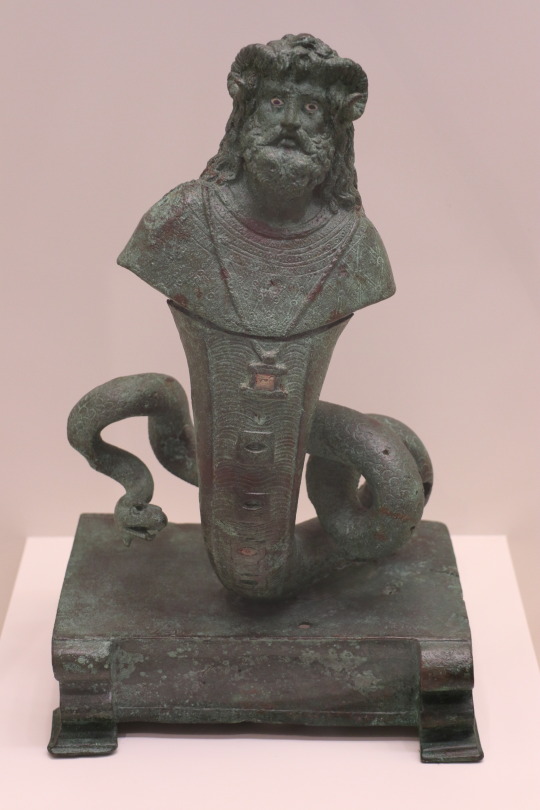
Statuette (copper alloy) of the composite Greco-Egyptian deity Serapis Amun Agathodaimon. Artist unknown; 1st cent. BCE/CE (late Hellenistic or early Imperial). From Egypt; now in the National Archaeological Museum, Athens, Greece. Photo credit: George E. Koronaios.
#classics#tagamemnon#Ancient Greece#Egypt#Ancient Egypt#Greek religion#Ancient Greek religion#Hellenic polytheism#Egyptian religion#Ancient Egyptian religion#kemetic#syncretism#Serapis#Serapis Amun Agathodaimon#Hellenistic period#Ptolemaic#Ptolemaic Egypt#Roman Imperial period#Roman Egypt#art#art history#ancient art#Greek art#Ancient Greek art#Egyptian art#Ancient Egyptian art#Greco-Egyptian art#Ptolemaic art#sculpture#statuette
519 notes
·
View notes
Text
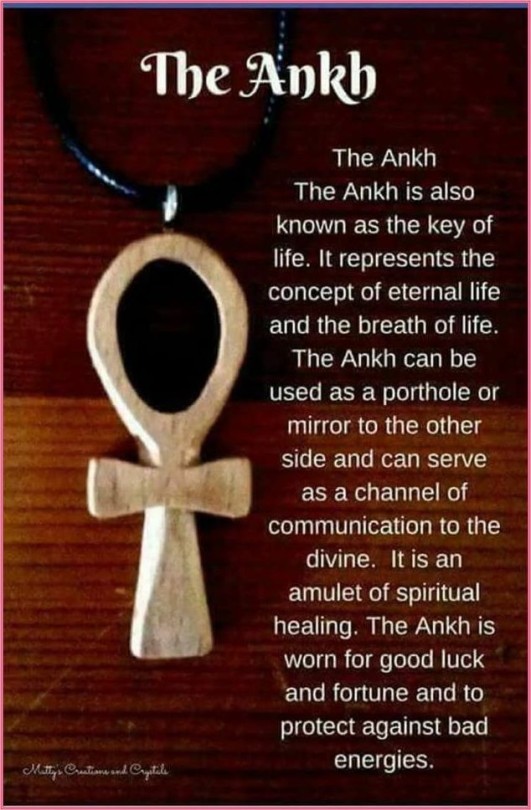
#witchcraft#witch#witches#hellenic pagan#hellenic polytheism#hellenism#egyptology#egyptian art#ancient egypt#egyptian#traditionalwitchcraft#witchery#witchcraft 101#simbols#sigil magic#sigils#ancient culture#ancient history#bruja#wicca#paganism#pagan witch#polytheist
137 notes
·
View notes
Text

Lord Anpu necklace with turquoise as the moon. i got this for my bday yesterday and i just... love it. i don't know how to style it but we'll see :]
82 notes
·
View notes
Text
Dua Wadjet, Wep Tawy 🙏
Praise Wadjet, the one who delimits the Lands
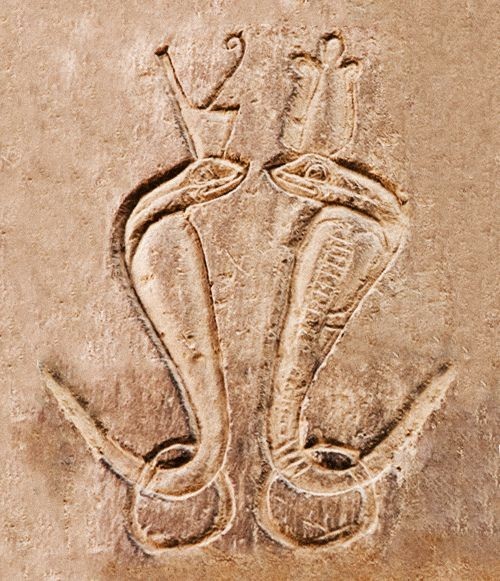




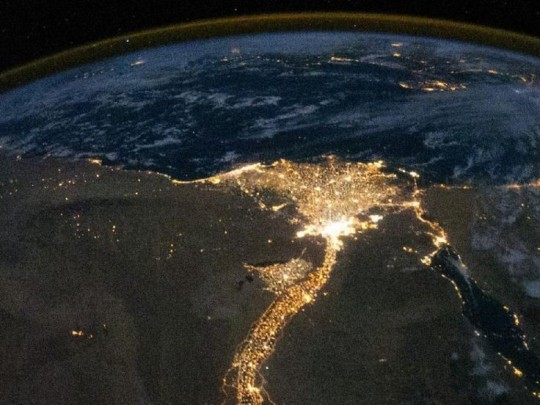
Praise thee, Great of Magic
Praise the Protector of Horus
Praise the Noble Serpent who flowed forth from the Eye
#wadjet#wedjat#buto#udjo#uadjet#eye of ra#eye of horus#dua netjer#dua#netjeru#netjer#kemetic paganism#ancient kemet#kemeticism#kemetic#kemet#kemetic polytheism#egyptian pantheon#egyptian#egyptian gods#ancient egypt#egyptian mythology#egyptian polytheism#egyptian paganism#deity worship#snake god#snake goddess
50 notes
·
View notes
Text
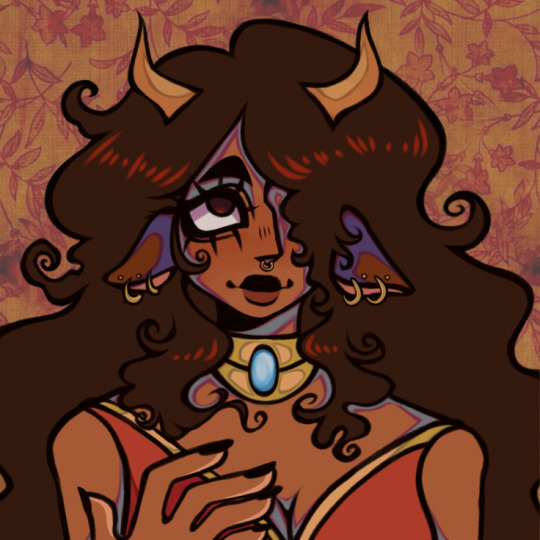
hathor!!!!!
#egyptian mythology#egyptian gods#kemetic polytheism#hathor#ancient egypt#art#my art#artwork#pretty cow lady
27 notes
·
View notes
Text

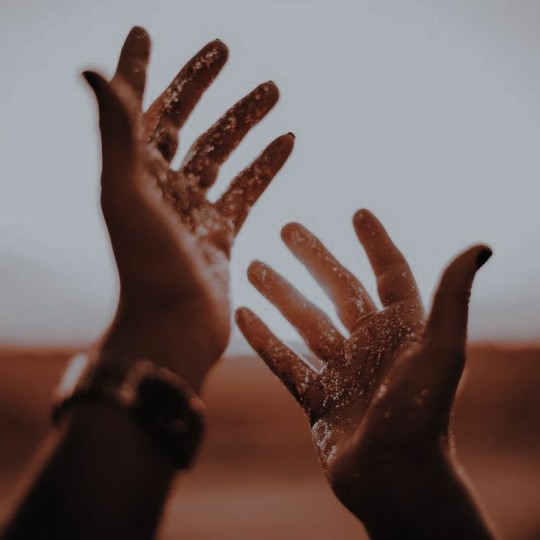
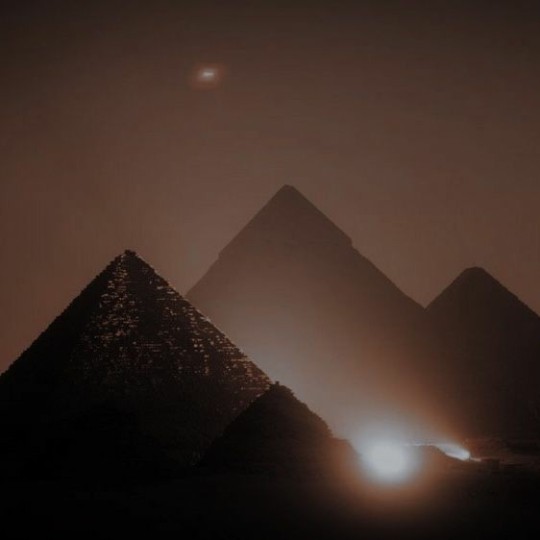



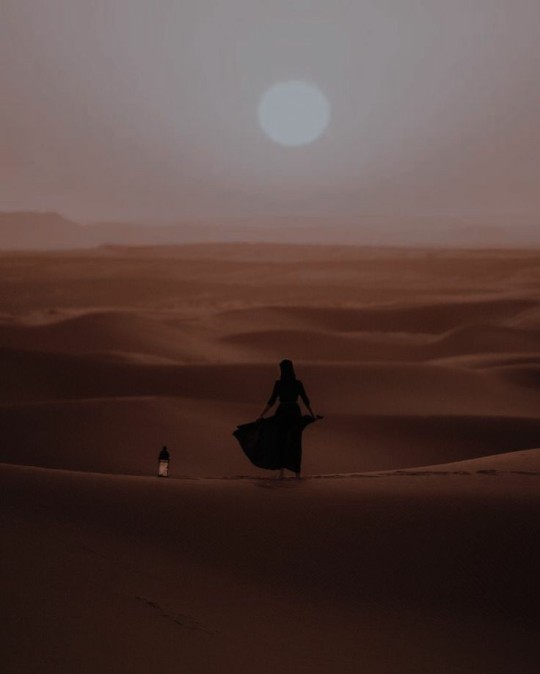
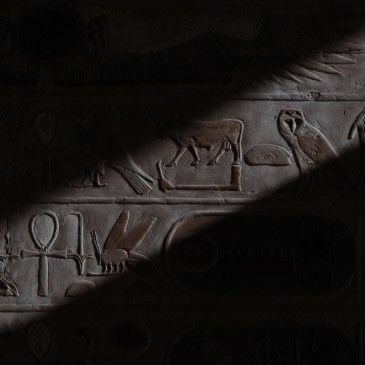

Deity Aesthetic: Aset
Egyptean goddess of healing, magic, life ,rebirth, motherhood, compassion, knowledge and protection.
Some of her titles:
Queen of Heaven
Mother of the Gods
The One Who is All,
Lady of Green Crops
The Brilliant One in the Sky
Star of the Sea
Great Lady of Magic
Mistress of the House of Life
She Who Knows How To Make Right Use of the Heart
Light-Giver of Heaven
Lady of the Words of Power
#ancient egypt#kemeticism#kemetic#kemetism#aset#egyptian gods#kemetic gods#kemetic paganism#kemetic polytheism#aset goddess#isis goddess#auset#aesthetic#moodboard#deity moodboard
531 notes
·
View notes
Text
I'd like to share some fascinating insights about the ancient Egyptian concept of Heka, which refers both to basically the concept of "magic" in Egyptian terms and to the deity who personified that concept, derived from The Mechanics of Ancient Egyptian Magical Practice by Robert Kriech Ritner. I do not doubt it will have a certain relevance to the broad milieu of Left Hand Path occultism, though in a larger sense I figure it has important things to say about magic in paganism. What follows is an overview of how Ritner covers the concept of heka.
Heka is an Egyptian word that was selected by Coptic scribes to translate the Greek terms "mageia", and therefore magic. Magic is often defined in opposition to traditional religion, and this understanding was sadly, to varying degrees, reflected in pre-Christian Roman and Greek cultures almost as much as it was across Christianity (remember, the Greek word "mageia" was typically derogatory), but this was just not the case for ancient Egyptians. In fact, if by magic we mean heka and by heka we mean magic, magic was seen by ancient Egyptians as an important part of religious life and the life of the cosmos itself. Egyptian texts such as the Pyramid Texts treated magic or heka as something that someone could possess and work over the cosmos or the world around them. That being said, understanding what heka means also depends on understanding the god Heka.
Heka is a deity who is first attested to in visual form at the funerary temple of the Fifth Dynasty pharaoh Sahure, where Heka is depicted leading a procession of gods bearing offerings to the pharoah. In the Coffin Texts, there is a spell meant to allow a magician to become Heka, which also serves as the longest theological exposition on the concept of heka or magic. In this text, the god Heka is shown as the first being to have been created by Re-Atum, who was created before the emanation of Hu (the first word) and before the emergence of duality, gave rise to the Ennead, and thus preceded almost all of the other Egyptian deities. In this sense, however, Ritner argues that the god Heka is really a hypostasis of the creative power of Re-Atum which is the source of the order of the cosmos itself. Further, in the Coffin Texts, Heka is also said to inspire fear in all the gods who came into being after him through his powers, and came into being of himself. Heka's creative power is not limited to a single event but is instead re-enacted daily. In fact, Heka is depicted as taking his place on the solar barque of Ra as a protector of Ra.
Heka, as magic, was understood as a power that could be used defensively, both by the gods and by humans, to destroy their enemies or preserve existence. In fact, according to the Instructions for King Merikare, magic was divinely created as a "weapon" for human beings to use for their own defense. Heka was thus, on its own, perfectly religiously legitimate, not to mention perfectly legal, but in a sense it was also basically "morally" neutral. It could be used to defend or create things, but it could also be used for "evil", presumably usually meaning hostile or "criminal" acts. "Sorcery" in itself was not illegal in ancient Egypt, but it was illegal to use magic against the king. In that context, though, one might assume that the crime was not magic itself but rather was understood simply as a form of sedition or seditious conspiracy. In fact, there is only one trial in the whole of Egyptian history for sorcery: the crime was using wax figures for magic in a plot against the throne, and even so the magic itself came from books that belonged to the king himself. Otherwise, the Coffin Texts also apparently mention an "evil magic", a form of heka used by spirits of the underworld and sorcerers that the deceased does not obey, but this is in the sense of meaning "hostile" magic - as in "hostile" from the perspective of deceased souls, and Ritner stresses this is nothing like the concept of "black magic" taken for granted in our Western Christocentric culture. Even Apep, who is daily destroyed by Heka, has his own heka and spells that he wields ineffectually against Ra.
Even so, Heka has an interestingly ambiguous stature, even in relationship to the cosmic order. On the one hand, the god Heka is depicted as the generator and protector of cosmic order. On the other hand, heka is something that can be used to threaten other gods and the order of the cosmos. In the Book of the Heavenly Cow, Ra flees into the heavens from magicians who act as they please using the magic that is in their bodies. In Egyptian myth, Ra refuses to share his divine name with Isis on the grounds that he doesnt want magicians knowing it and therefore being able to threaten him with it. Egyptian theologians sometimes responded to this idea by declaring that at least some gods (for example, Shu and the divine bull of Medamud) were immune to the effects of magic. Despite this, there are numerous magical texts and spells in which magic had the power to threaten gods, the solar barque, and even the existence of the cosmos. According to Ritner, this reflects a widely held Egyptian belief in the power of heka as something all beings are subject to. You can see this clearly in the Greek Magical Papyri, in which lots and lots of spells featured compulsion rites or "threats" made to various gods by magicians, often assimilating into the identity of other gods.
Incidentally, the god Heka was also sometimes seen as having the power to threaten the souls of the deceased: in the Book of Coming Forth by Day (or "The Book of the Dead"), Heka can be threatening to the deceased soul along with a thousand violent divine guardians who stand beside him, and this threat has to be overcome by the deceased (though, again, this isn't necessarily supposed to mean something demonic).
Interestingly, the Egyptians did not see heka as something "supernatural" in the sense that we think of it today, and neither was it seen as "prenatural" as such, but rather as something present within "nature", or at least within the order of the cosmos itself, and as something that gives life to the cosmos itself. It was thought to reside in the bodies of gods and humans as well as in the plants and stones of the earth. This is actually very much in line with the concept of sunthemata as presented by "Neoplatonist" philosophers such as Iamblichus and Proclus, in which The One and/or the divine is diffused across all things in the cosmos, even plants and stones. In the Book of the Heavenly Cow, Ra is also depicted as being immanent in heka or Heka, which in turn is imminent in everything else. This is very interesting because it's as if Ra sees himself as being threatened by that which he himself is immanent in. Even more interesting is the text's ba-theology, in which heka is established as the ba-spirit of Ra himself, who created and established the heavens to house the ba-spirits of the other gods in. So heka is the ba-spirit of Ra, who is immanent in heka, which in turn is immanent in the bodies of the magicians who now threaten Ra. On the other hand, a separate hymn currently housed in Berlin depicts heka or magic as the ba-spirit of the god Ptah. In later papyri, heka is describe as the ka of Ra.
Ritner suggests that Heka's association with ka is linked to the power of heka to enter or penetrate the ka of anything in creation and invest it with either generative or destructive power. Power itself becomes the emblem of Heka's name. In Ptolemaic hieroglyphs, the image of Heka featured a phty-sign on his head, which Ritner suggests is a way of writing the word "ntr", or neteru, meaning "god" or "deity", thus reflecting the notion of the gods as being sources of heka or magical power. In another payprus, Re-Atum says "magic (heka) is my name".
Heka (magic) is to be understood as a power immanent throughout the cosmos, which both underwrites the very existence of the cosmos and might potentially destroy it, and can both support the order of the cosmos and subvert and shatter it; divine power that also threatens gods. That last part is in the sense that heka (magic) comes from the gods, is immanent in gods and at least one god is immanent in it, but it is also capable of threatening gods and spirits, or allowing magicians to do so. The way that works runs along lines similar to the theurgical logic of sunthemata, but also runs along the lines of Egyptian theology concerning ka. From that very standpoint, you can see the true extent to which the magic of the PGM is underwritten by Egyptian theology.
Those who align with a "Left Hand Path" magical orientation can clearly derive something useful from this conception, especially when seeking a link to paganism that might break them from what they see as the confines of the Christocentric religious imaginary. It seems then that those who want a pagan magical worldview that also allows the same kind of Promethean conceit so present in modern Satanism and similar systems would do well to explore the subject of ancient Egyptian magic and theology.
7 notes
·
View notes
Text

Kemeticism Blog Series
─────────────────────
Aker
A god of the Earth and the horizon

Connection to other gods:Geb, Sutekh/ Setesh/ Set
Domain:Sun, Underworld
Description
Aker was first depicted as the torso of a recumbent lion with a widely opened mouth. Later, he was depicted as two recumbent lion torsos merged with each other and still looking away from each other.
From Middle Kingdom onwards Aker appears as a pair of twin lions, one named Duaj(meaning "yesterday") and the other Sefer(meaning "tomorrow"). Aker was thus often titled "He who's looking forward and behind". When depicted as a lion pair, a hieroglyphicsign for "horizon" (two merged mountains) and a sun disc was put between the lions; the lions were sitting back-on-back.
In later times, Aker can also appear as two merged torsos of recumbent sphinxes with human heads.
Roles
One of the earth gods guarding the "gate to the yonder site". A protector of the deceased Kind against snakes in the underworld. replaces the god Kherty, becoming ferryman of Ra in his nocturnal bark. In the Book of the Dead, Aker also "gives birth" to the god Khepri. Aker is asked to hide the body of the dead Wesir/Osiris beneath his womb, Aker is protected by the god Geb.
Cult
Aker appears for the first time during the 1st Dynasty with the kings (pharaohs) Hor Ahaand Djer. An unfinished decorative palette from the tomb of Djer at Abydos shows Aker devouring three hearts.The location of Aker's main cult center is unknown, though. His mythological role was fully described for the first time in the famous Pyramid Texts of king Teti.
Mythology
Aker was first described as one of the earth gods guarding the "gate to the yonder site". He protected the deceased king against the three demonic snakes Hemtet, Iqeru and Jagw. By "encircling" (i.e. interring) the deceased king, Aker sealed the deceased away from the poisonous breath of the snake demons. Another earth deity, who joined and promoted Aker's work, was Geb. Thus, Aker was connected with Geb. In other spells and prayers, Aker is connected with Seth and even determined with the Set animal. This is interesting, because Seth is described as a wind deity, not as an earth deity.
In the famous Coffin Texts of Middle Kingdom period, Aker replaces the god Kherty, becoming now the "ferryman of Ra in his nocturnal bark". Aker protects the sun god during his nocturnal travelling through the underworld caverns. In the famous Book of the Dead, Aker also "gives birth" to the god Khepri, the young, rising sun in the shape of a scarab beetle, after Aker has carried Khepri's sarcophagus safely through the underworld caverns. In other underworld scenes, Aker carries the nocturnal bark of Ra. During his journey, in which Aker is asked to hide the body of the dead Osiris beneath his womb, Aker is protected by the god Geb.
In several inscriptions, wall paintings and reliefs, Aker was connected to the horizon of the North and the West, forming a mythological bridge between the two horizons with his body. Certain sarcophagus texts from the tombs of Ramesses IV, Djedkhonsuiusankh and Pediamenopetdescribe how the sun god Ra travels through the underworld "like Apophis going through the belly of Aker after Apophis was cut by Seth". In this case, Aker seems to be some kind of representation of the underworld itself.
──────⊰In Workings⊱──────
Ideas for honoring or working with/worshiping Aker
𖤓*Please know basic protections and energy work before attempting any deity work.*𖤓
*It is important to note that everyone's experiences are different and will work with spirits for different reasons. Some people may like a spirit while others will not and that's okay. Ask these spirits what they will work with you on as well as ask them if they can help you with whatever it is you need.*
Altar
Set up an altar/sacred space for performing rituals or giving offerings. Items may include
⬩Altar cloth
⬩Cup or chalice
⬩Incense and incense burner
⬩Offering bowl
⬩Green or yellow candles(you can use any color
⬩Statues of the lion or Sun
For more information on basic altar setups and deity work check out the deity work post.
Basic offerings:Bread, Frankincense, Game Meat, Lion Statue Myrrh, Sour Dough, Meat, Sun Symbols,
Rituals
Ideas for rituals may include
⬩Earth and nature rituals
⬩Honoring Sun and Earth
⬩Summer Solstice
⬩You can ask him what he will help you on⬩
𓃬𖤓 𖤓 𖤓 𖤓 𖤓 𖤓 𖤓 𖤓 𖤓 𖤓 𖤓 𖤓 𖤓 𖤓 𖤓𓃭

For more content follow my main blog to see posts about all kinds of occult/pagan/witchcraft related stuff
If you have any other questions or wish to join a community feel free to join my 18+ occult server
Ask me anything on my blog
#Kemeticism#Kemetism#ancient egypt#egypt#Egyptian#kemetic paganism#kemetic polytheism#kemetic#egyptian gods#egyptian deities#deity#deities#occult#witchblr#witchcraft#pagan#paganblr#paganism#pagan witch#baby pagan#kemetic pagan#occultblr#occultism
23 notes
·
View notes
Text
!!seeking advice/opinions from POC-voices only!!
As I have expressed before, my partner is having trouble finding his own religious path, so I am posting on his behalf.
He has always felt drawn to the Egyptian deities, but is worried that to worship them would be inappropriate.
For context, his familial background is Magyar and German. But he feels no connection to the Eastern European deities.
Any insight would be appreciated 💕
#polytheism#egyptian polytheism#ancient egypt#Egyptian gods#Osiris#Anubis#Hathor#Horus#Bastet#neith#Serapis#Ptah#Thoth#Amun#min
10 notes
·
View notes
Text

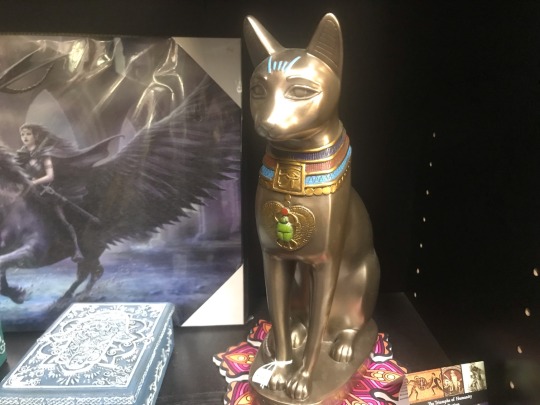

Sobs because they were like $400 but I WANT them
#endo safe#fictive blog#introject blog#Egyptian mythology#ancient Egypt#ancient Egyptian#kemetic#kemetic polytheism#kemetic paganism
19 notes
·
View notes
Text
A Dance with Bast

"Consciousness expresses itself through creation. This world we live in is the dance of the Creator. Dancers come and go in the twinkling of an eye but the dance lives on. On many an occasion when I am dancing, I have felt touched by something sacred. In those moments, I felt my spirit soar and become one with everything that exists. I become the stars and the moon. I become the lover and the beloved. I become the victor and the vanquished. I become the master and the slave. I become the singer and the song. I become the knower and the known. I keep on dancing and then, it is the eternal dance of creation. The Creator and the creation merge into one wholeness of joy. I keep on dancing — until there is only … the dance."
Michael Jackson "The Dance" - from inlay sleeve of Dangerous (1991)
"I would believe only in a god who could dance. And when I saw my devil I found him serious, thorough, profound, and solemn: it was the spirit of gravity - through him all things fall."
Friedrich Nietzsche - "Thus Spoke Zarathustra"
I was participating in a pathworking meditation during my Reiki I° class. I was instructed to focus on my Soul Star chakra (also known as the Vyapani or universal heart) and that I would manifest a sacred space there. To my surprise, the space that I found myself in was a sacred library that I dreamed of many years before.
As I walked around this space, I noticed Bast sitting in a plush, crimson velvet chair. There was a hearth behind Her radiating warmth from a cozy, crackling fire. I approached Bast and bowed with my hands outstretched, a posture of devotion known as henu. Bast smiled and after a period of pleasant silence, I asked Her if She wanted to dance with me. The Goddess rose from Her seat and walked towards me with calm, authoritative grace.
Bast was covered from head to toe in short, black fur. Her eyes were green, Her teeth radiant and sharp. She wore a flowing but simple, turquoise-colored dress in a modern style, accented with gold leaf. She wore gold bracelets on her wrists and ankles, gold armlets above the elbow in a serpentine design, and a stunning gold Wesekh collar adorned with jade, sapphires, blue amethysts, and emeralds. She had earrings of emerald and wore simple but elegant jade pumps on her feet. Her nails (more like claws) were refined but sharp. She was about my height if not an inch or so taller.
She took my hands in Hers and we began to waltz around this space. As we danced, it felt as though we had done so many, many times before. The Goddess spoke and I listened. She told me that I have come a long way and there is much yet that I must do. She told me to relax and loosen up a bit more. “Have fun and enjoy life! Do everything that you desire. That is what life is for.” Her face became brighter, soft, and encouraging, and with a joyous smile and twinkle in Her eye She told me the words that I will remember for the rest of my life, “Life can be beautiful if you let it.”
And with that, we danced on, smiling and free, as my awareness returned to my teacher’s living room. My head turned to the right and outside the tall windows, I could see the sun rising slowly into its zenith.
Life is not meant to be a breeze. Misfortune, mistakes, and loss are there to teach and shape us, if we are so inclined to listen. Beauty is certainly in the eye of the beholder and after that experience, which I chose to believe was authentic, I began to ask myself, “Why not try to see the beauty in life? Why not see the good?”
And so, I began to realize that such a mindset was a choice. I chose to see each moment not in a glass-half-full sort of way, but as an opportunity for creation. I began to cultivate openness, acceptance, gratitude, and ingenuity as a state of being. The more I embodied the beauty and goodness that I wanted to see in the world, the more I found that it was.
Dua Bast!
Image is credited to FelineFire.
#bastet#kemetic#kemeticism#kemetism#netjeru#egyptian gods#dance#dancing#meditation#pathworking#egyptian polytheism#polytheist#goddess#goddess worship#cat goddess#kemetic polytheism#kemet#ancient kemet
12 notes
·
View notes
Text
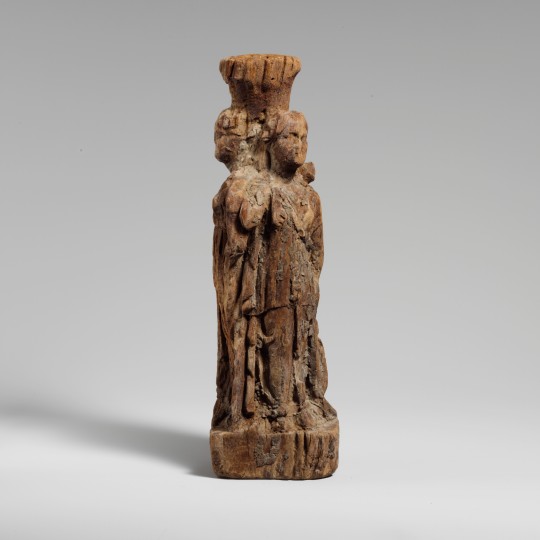
Statuette of juniper wood from Ptolemaic Egypt, representing the triplicate goddess Hecate. Now in the Metropolitan Museum of Art.
#classics#tagamemnon#Ancient Greece#Ancient Egypt#Ptolemaic#Ptolemaic Egypt#Greek religion#Ancient Greek religion#Hellenic polytheism#Hecate#Hekate#art#art history#Greek art#Ancient Greek art#Egyptian art#Ancient Egyptian art#Greco-Egyptian art#Ptolemaic art#sculpture#statuette#woodwork#carving#Hellenistic period#Hellenistic art#Metropolitan Museum of Art
476 notes
·
View notes
